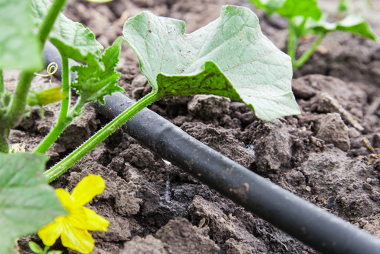Brazil, despite being a power in terms of water availability in its territory, has been facing problems with water scarcity, in many cases caused by the incorrect management of its resources, by pollution and, also, by the use in an unsustainable way. In the country, about 72% of all consumption is carried out by irrigation systems in agriculture, a number slightly above the global average (70%), but well below the average for underdeveloped countries (82%). Therefore, if measures are taken to water saving in irrigation, the preservation of water resources can be perpetuated more easily.
It is important to remember, first of all, that irrigation cannot be seen as a “villain” of water consumption in Brazil, given that this method is of paramount importance for the production of food and also for export-oriented products, in addition to raw material. The big question is: how to maintain or even increase current productivity rates while reducing the consumption of water resources? There is, therefore, a need to think about the relationship between irrigation and water savings.
One of the ways to reduce the use of water in agriculture is the adoption of irrigation methods aimed at this, of which the best known is the irrigation bydrip. It is a type of irrigation in which, as the name suggests, the distribution of water over the planting is done by pouring a few drops, which are sufficient to meet the needs of the plantation.
At the drip system, the water flows through polyethylene tubes under pressure, in order to go directly to the root of the plant, having a utilization level of around 95%. With this technique, the waste of water due to evaporation or excessive use is practically null, which helps to maintain the productivity of crops in a sustainable way, at least under the bias water. In addition, the impact on the soil is minimal, as there is no surface water runoff and no impact from falling to the ground.

Drip irrigation in a blueberry crop (blueberry)

Vegetable cultivation carried out by dripping
Generally, drip irrigation is combined with fertigation, which is fertilization combined with irrigation through the addition of nutrients, usually salts or mineral fertilizers, such as calcium nitrate, potassium and others. Thus, as the drip allows a gradual supply of water to the soil, its absorption happens more easily, providing a better use of resources.
There are still other localized irrigation systems, carried out close to the ground, which also allow water savings, although not as much as the drip technique. One of them is the microspray, in which small micro water sprinklers are positioned to distribute water over a nearby space. There are models that also allow for use in larger areas, although the expense is inevitably higher.
Furthermore, the use of technology can also favor water savings in agriculture. In many cases, computer programs are designed to provide information on soil and air moisture, temperature, and other factors. Thus, it is possible to calculate more precisely the amount of water to be used in irrigation, which considerably reduces waste.
Therefore, we can see that there are several ways to save water in irrigation, which can be important for the preservation of water resources both regionally and globally. Studies carried out by the Food and Agriculture Organization of the United Nations (FAO) reveal that a 10% savings in irrigation would be enough to supply twice the population worldwide.
By Me. Rodolfo Alves Pena
Source: Brazil School - https://brasilescola.uol.com.br/geografia/irrigacao-economia-agua.htm

